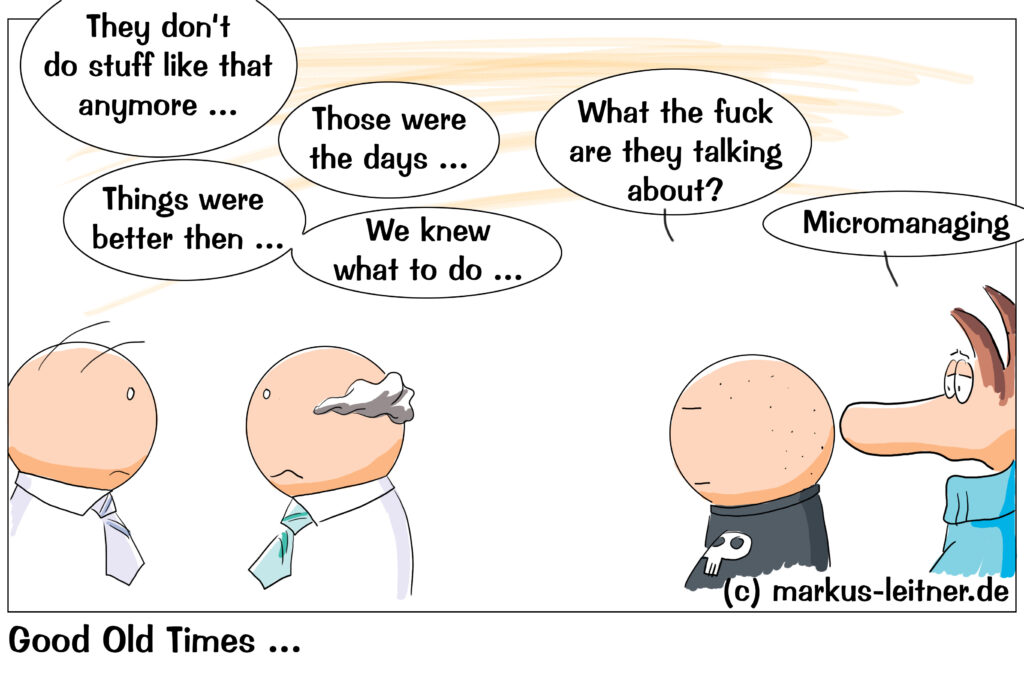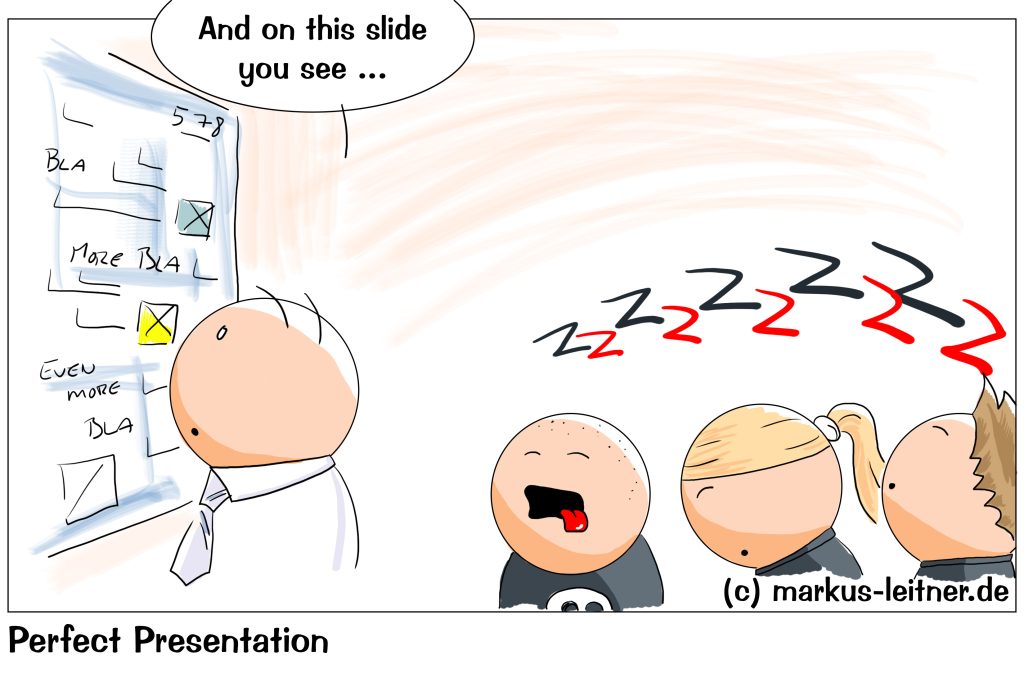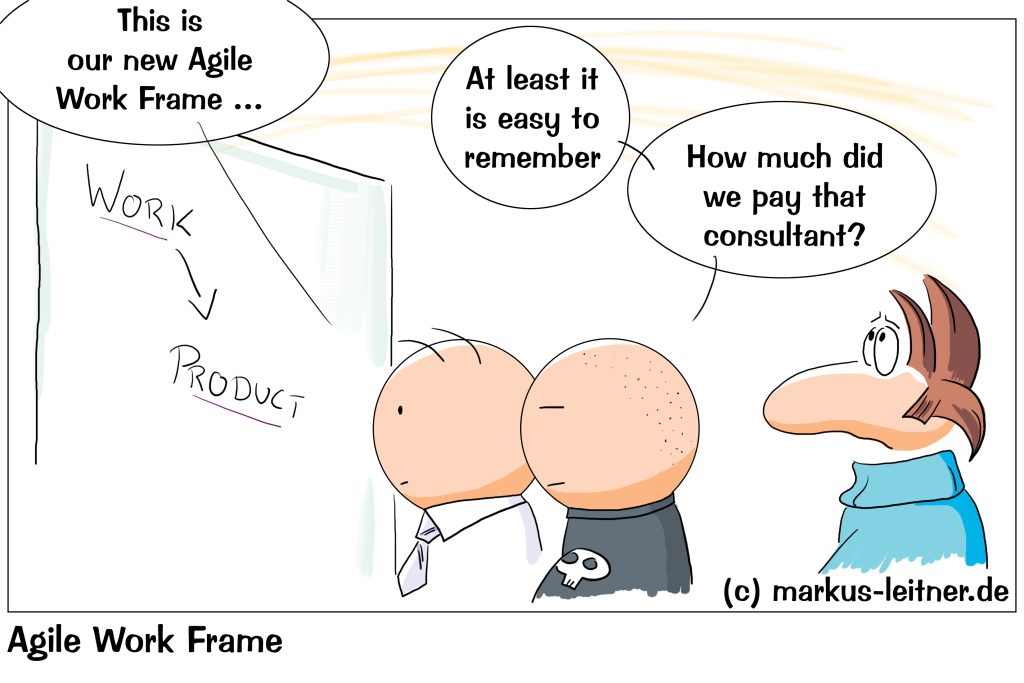
What do we understand under the terminology modern leadership? The answer is as simple as it is frustrating: everyone something else. You can read tons of books on this particular subject and take a whole lot of different seminars, but in the end each organization has to make its own decisions on what to expect from a leader or manager. If you have understood a few simple principles, you are already a big step further down your road.
If we talk about modern leadership, we first have to agree on what we understand under traditional or ancient or no longer current leadership, because that is obviously what we no longer want. Why we call the one thing modern and the other thing perhaps the old world, should not be our topic today.
In very classic leadership roles – to put it very simply – we can find the simple principle of Command & Control, i.e. the manager makes a decision, issues an order and then controls the execution of this order (i.e. the work result) in some form. I am perfectly aware, that this only partially reflects a leadership role, but all of the aspects, that we understand today as modern leadership, are the rest of the classic leadership role. Just believe me for now – we will get back to that later.
This triumvirate of decision, command and control fits perfectly for our further considerations, because we can develop three principles from it, which are very good cornerstones for what we can call modern leadership.
In an increasingly complex world with increasingly complex projects in increasingly complex structures, it is no longer possible for us to decide everything on ourselves. At some point we realized, that it is clever to have the decision made, where the greatest knowledge lies, and of course that is not always the manager. Technical questions are decided in the teams. That is why we also speak of self-organized teams.
Does this mean that the manager is excluded from every decision?
Not at all. If we talk about purely technical topics, i.e. questions of pure implementation, the team decides alone – no problem. However, when we talk about more strategic decisions, both sides – team and manager – bring their expertise with them. In this case, perhaps the best option is to make a mutual decision.
For our understanding of leadership, this means that decisions are made where the best result can be expected based on expertise. For the manager, this means relinquishing part of the decision-making authority. Which one it is, how far it goes and to whom, we have to see. That depends on the type of decision.
The second aspect – giving instructions – is not black or white either. Nobody wants a boss who shouts orders or is micromanaging (the word alone hurts). We struggle with the concept of the superior and are only too happy to speak of flat hierarchies. But here too, this aspect does not completely fall out of the leadership role.
The manager is responsible for his/her area. He/she is therefore also responsible for the result in that area. When things go wrong, the leader is the one who gets the kicking. Of course, we want a pull principle. We want everyone involved to take on their tasks, but unfortunately that does not always happen. Unfortunately, the reality is not always as beautiful as we would like it to be. Sometimes a manager also has to distribute things. Not in every department we work with colleagues who voluntarily take on their tasks. Or what do we do when our colleagues only pick the cherry on the cake?
There are situations where a chain of command is also faster. I am not talking about a military crisis, but rather a situation in which we have to react very quickly, and we cannot afford to discuss first and then draw matches about who is doing what.
I am not saying we want this to be permanent. I am just saying that getting a work assignment is not always the worst option – think about that before you hang me from the next tree.
For our new understanding of leadership, this means that we as managers support and promote self-organization and thus also a pull principle (we will look at what that means and how it works elsewhere), but we are still fully aware that there are situations in which we have to give orders.
The third pillar is the control of the work results. How about that? That is really nasty because we as managers are still responsible for our unit. We should let our teams control themselves, trust that everything will fit, and if it does not, we are responsible and have to suffer the consequences?
I do not know how you see it, but it sounds like a pretty stupid agreement to me, one in which I can only lose.
I do not want to control everything myself. We have testers (hopefully) and processes (hopefully) for this, but I can very well be part of the process creation. I can ensure and support that this point of control gets by without me, and I can still sleep peacefully by working with the teams on this process, by agreeing on standards together, by agreeing on minimum quality criteria, etc. I can support you with the tools, I can support you with the framework conditions, and I can make the goals of the organization transparent. I can (and should) do a lot without affecting the details and the actual work result.
Modern leadership here means framework conditions, goals, tools and agreements. That defines how we deal with the third pillar – control.
The question that remains, as I mentioned at the beginning, is that the rest of the classic leadership role is also part of the modern leadership role.
Even fifty years ago, leaders were enablers for their teams. You were not a coach yourself – you are not today either – but you were responsible for the professional development of your teams. We still do that today. Only the tools and processes have changed. Teams today decide for themselves (at least in part) which training courses they consider necessary. Without the manager who organizes it – even if it is just the funding – you will not get very far.
Today, too, leadership often means personal responsibility. The legislature has an important say in this aspect. This facet of our work has not changed that much in recent years, even if we like to think otherwise. We still have the duty to make extremely unpleasant decisions when in doubt. We still have a lot of administrative work there.
The list could go on, but for today it should be enough if we have taken a closer look at the three pillars mentioned – decision, instruction and control. In addition, there is the role of the enabler. With these things, a very clear picture of a modern understanding of leadership apart from black and white and extremes can be drawn, which in most organizations provides a good basis for the concrete development of one’s own leadership role.
Core: The aspects of decision, command and control are changing from the centralization of the leadership role to a distribution between the manager and the team. In addition, there is the role of the enabler in the sense of facilitating professional development.
If you need any assistance or want to know more, just speak to me.











